Hello sweet friends! I hope you are well. We have had a lovely guest here at Storybook Cottage. Mr. Decor’s sister, Lisa, came for a visit. I readied the house while wearing A New 1930s Housedress.
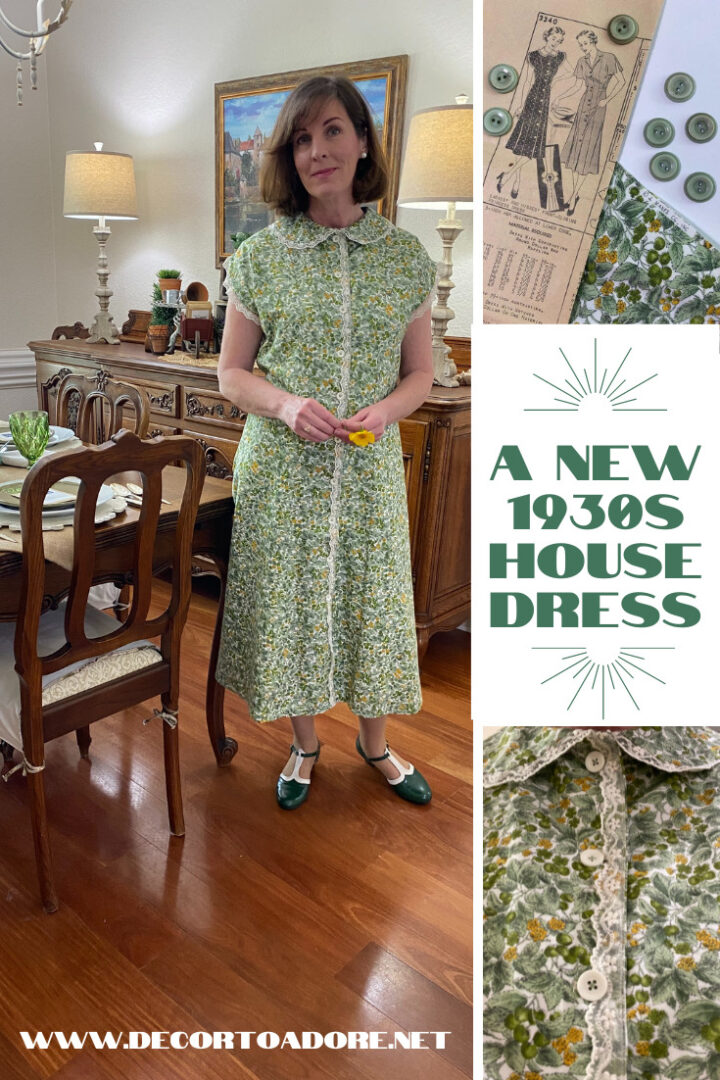
A New 1930s Housedress
The pattern was a vintage (almost antique) 1930s gem that I had found last year. It was a mail order pattern so sadly there are no brand names or numbers to reference.
At the turn of the century though the 1980s newspapers and women’s magazines would advertise patterns for purchase. The mailing envelope said Bettie Daniles in Oklahoma ordered this fun frock.

The fabric was also a vintage find from an estate sale. It is probably from the 1950s. It measured just 33″ across.
As I began constructing the dress the sweet details, such as the collar, were getting a bit lost in the busy print. So I added a bit of lace to jazz it up. This lace probably dates to the 60s or 70s. I found out it was polyester as I was pressing the collar. The iron was too hot and it melted. So, I had to remake the collar. Afterwards I simply just used a pressing cloth to avoid another meltdown.
As you can see in the image above I was going to use some fabulous vintage green Bakelite buttons but I only had eight buttons and the finished dress, on me, needed twelve.
Both the lace and buttons were a gift from my friend Catharine.
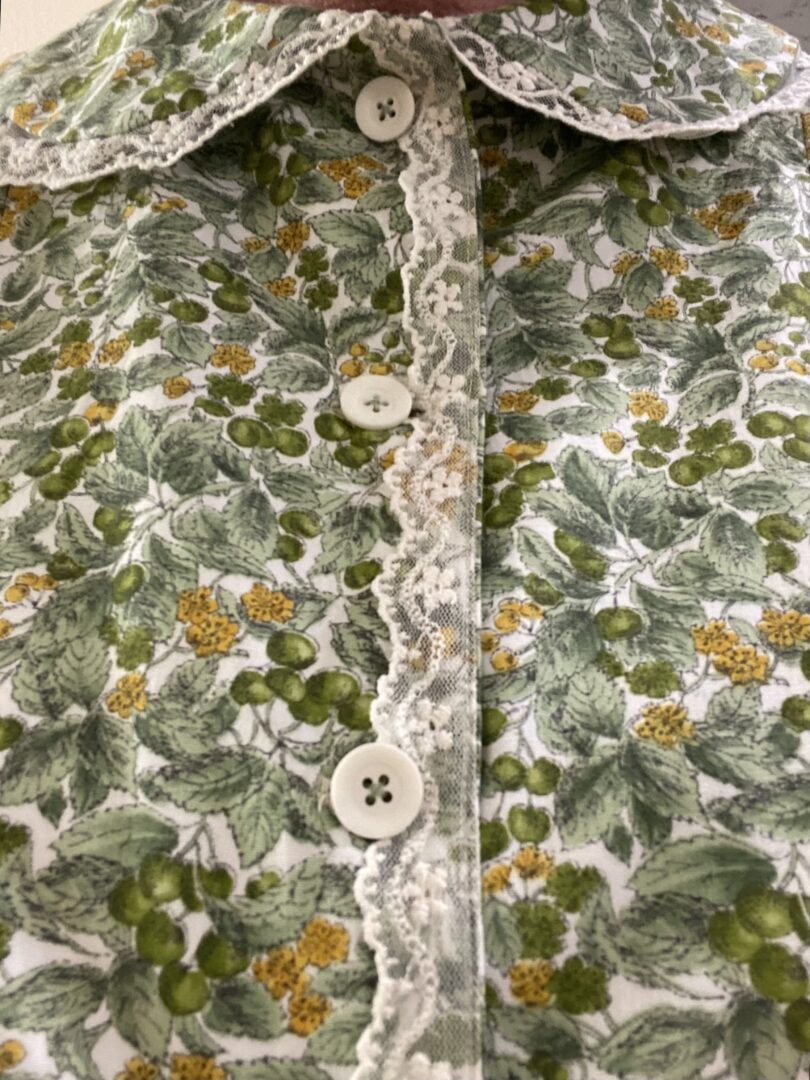
The dress pattern featured princess cut panels and incorporated an all in one MAGYAR type of sleeve.
I used French seams on the front and back. Regular seams were sewn on the sides to accommodate the Magyar sleeve. The side seams were then serged to prevent fraying as this dress will probably be in a heavy wash and wear rotation this summer.
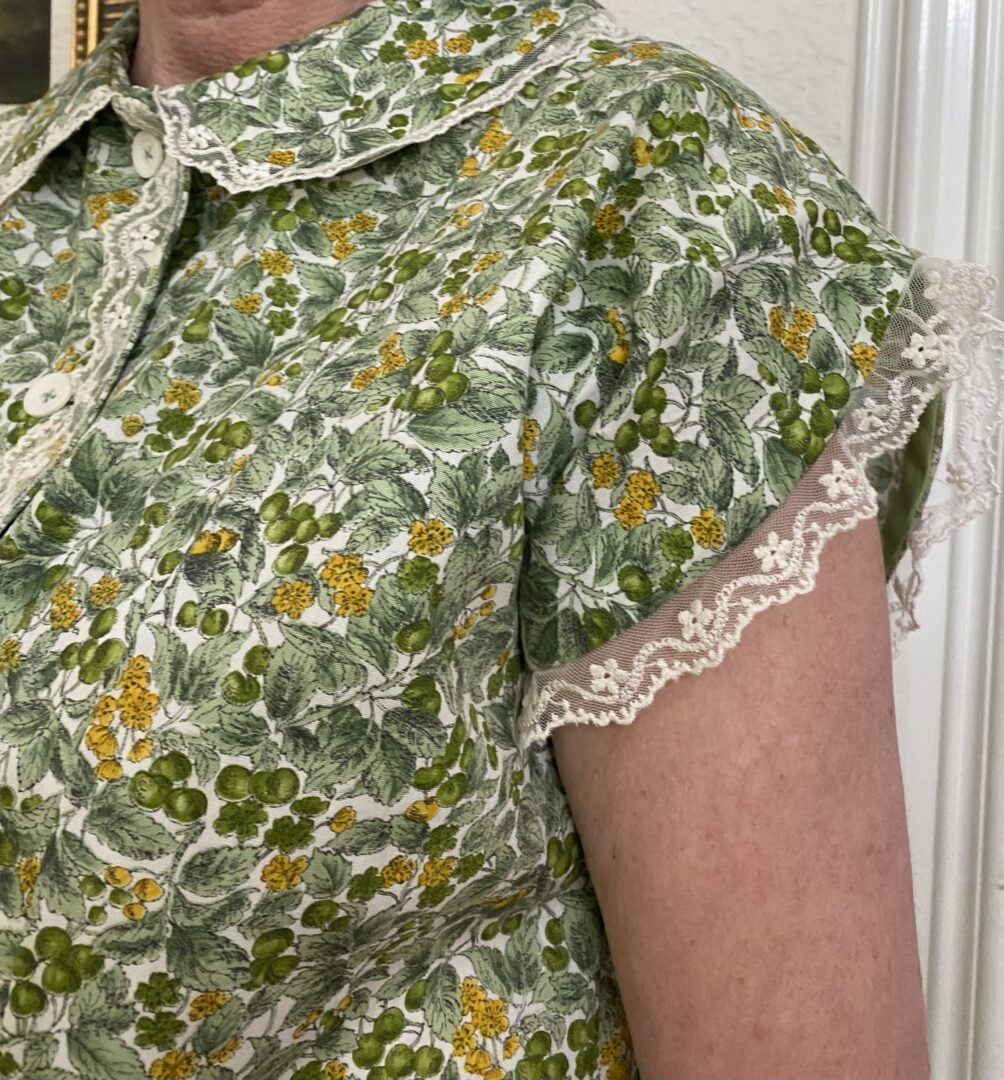
The dress is VERY comfortable to wear.
For these photos under the dress I wore a new linen slip that I made which you can see HERE.
I have to get on a soapbox here for a moment and tell manufacturers that when a person lives in a humid or hot climate they DO NOT want to wear a heat trapping polyester slip. I am lucky that I can sew. But please make some slips in linen or cotton for those who cannot!
Why wear a slip at all? Slips provide a smooth foundation for the outer garment to glide over. As a golden girl I have a few lumps and bumps and the slip makes the dress hang better. Also, a linen or cotton slip absorbs body odors and oils. So then you don’t have to wash the outer garment as much. This then extends the life of the clothing. As this dress took about 12 hours to make I want to enjoy it for a few summers.
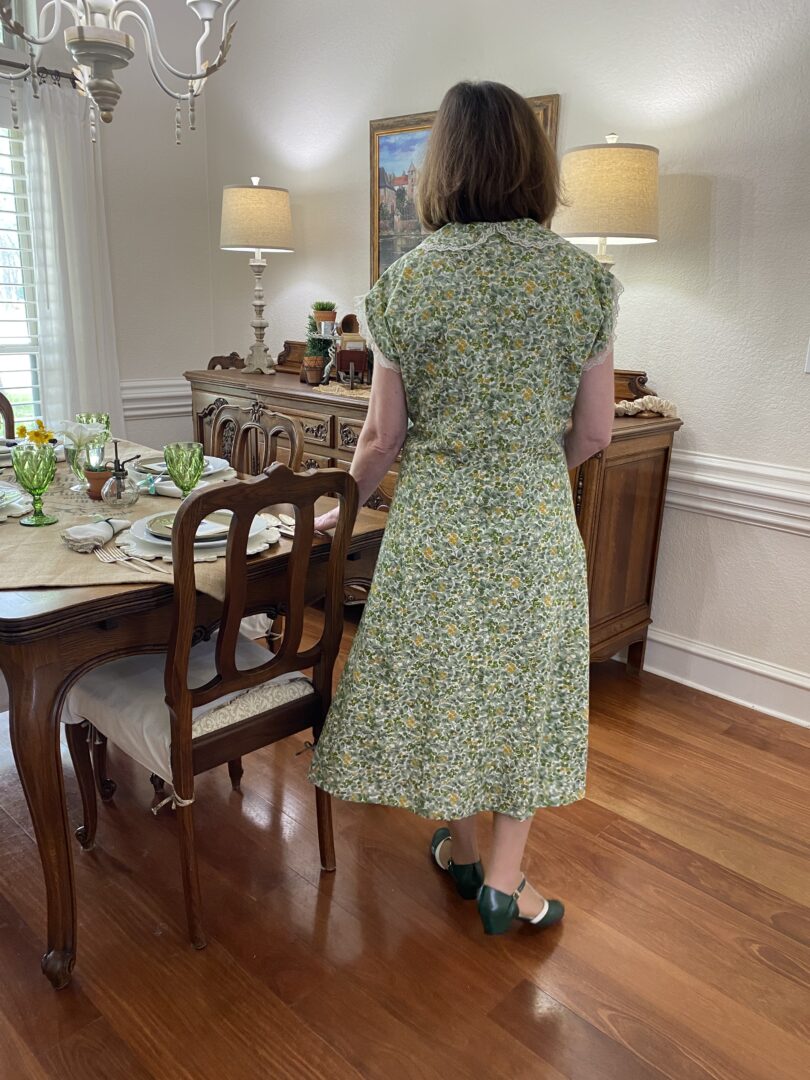
I will say that for my body shape (pear) not having a defined waist makes this dress style appear a bit frumpy on me. But as I plan to wear it around the house this doesn’t bother me in the least. I’m about cool comfort!
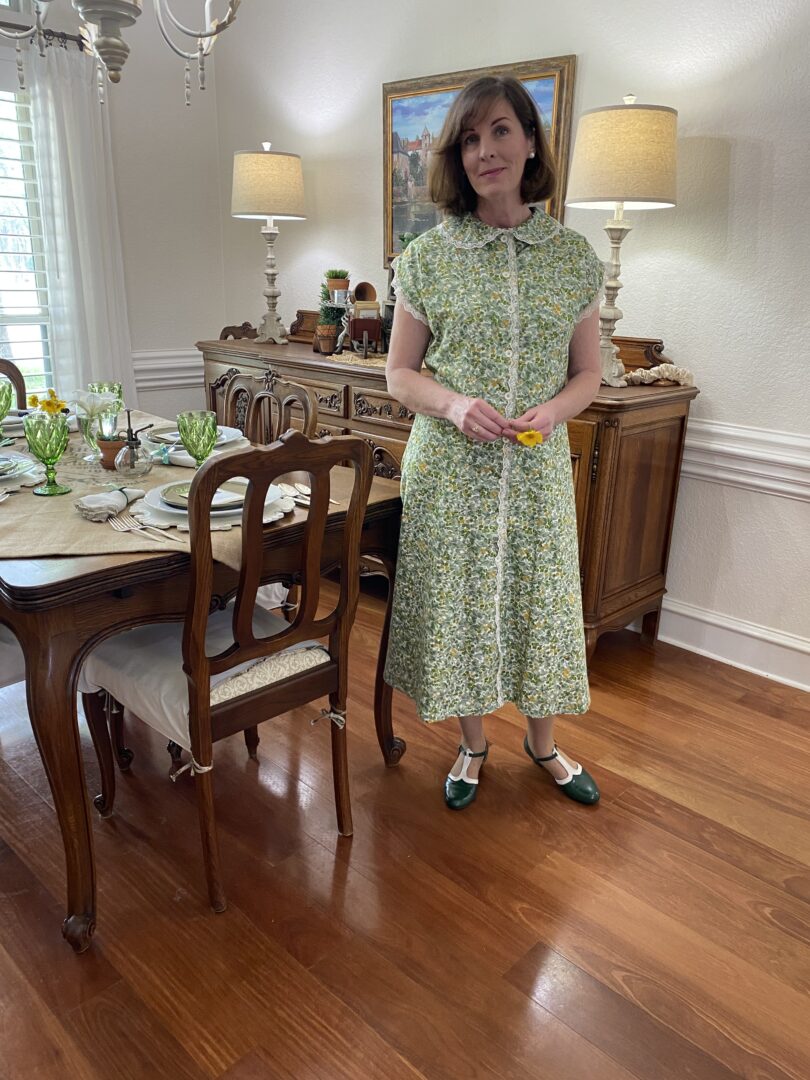
I’ll be back on Sunday!
Laura
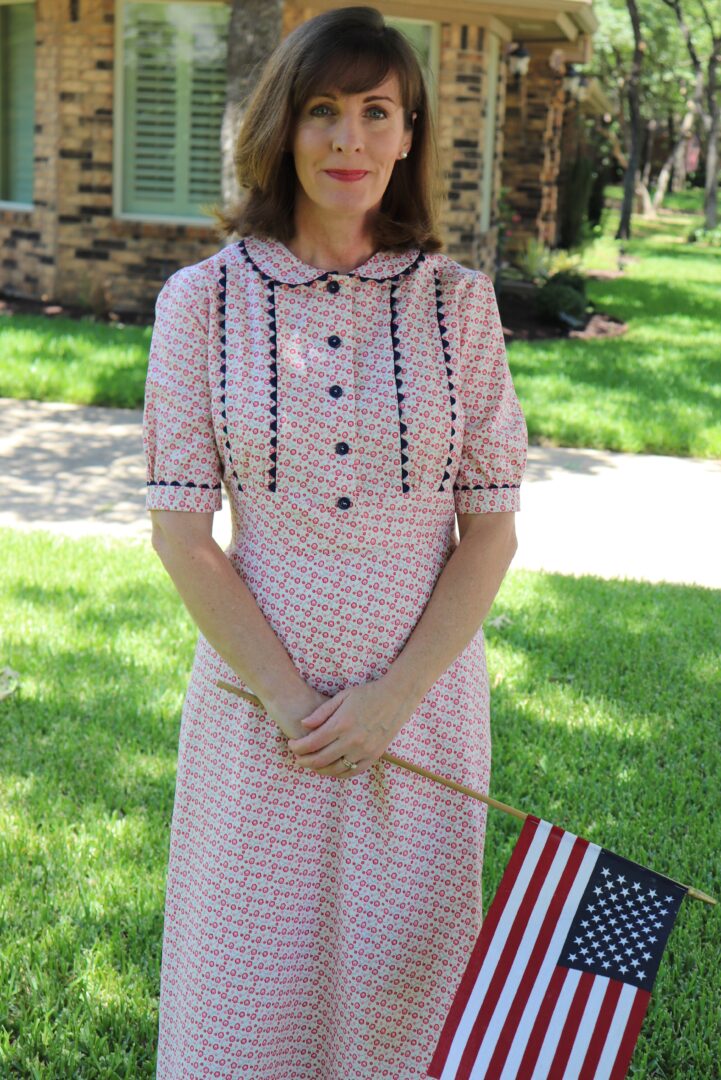
Both dresses pictured are lovely. I have a few vintage patterns….some almost antique….that I pulled out a couple of weeks ago with the intention of making a house dress or three. Also have some vintage fabrics and notions. A tip to anyone not familiar with vintage patterns….check the measurements for chest, waist and hips carefully as a size 10 or 12 of today is different from a size 10 or 12 of decades gone by. In current patterns, I wear a size 10. In vintage/antique patterns I wear anywhere from a size 12 to a size 16!
I love the green dress in this pattern, but I think the red, white and blue has to be my all-time favorite for authenticity. It is amazing. I’ve sewn a lot of curtains and quilts, but have never tried to make something with a pattern. So, I decided to sew some doll clothes for my 1957 – 7th birthday present, my Miss Toni doll. I thought, well, I’ll sew these little underpants for her by hand, using the pattern. Three hours later, I try them on her and they are down to her knees. I don’t know what happened but I got a good laugh out of it. If I push the legs up, they look like clown pants. Hysterical. And, I was going to make her a beautiful new wardrobe.
It’s a darling dress and you look cool as a cucumber in it! Hear, hear for the slips!